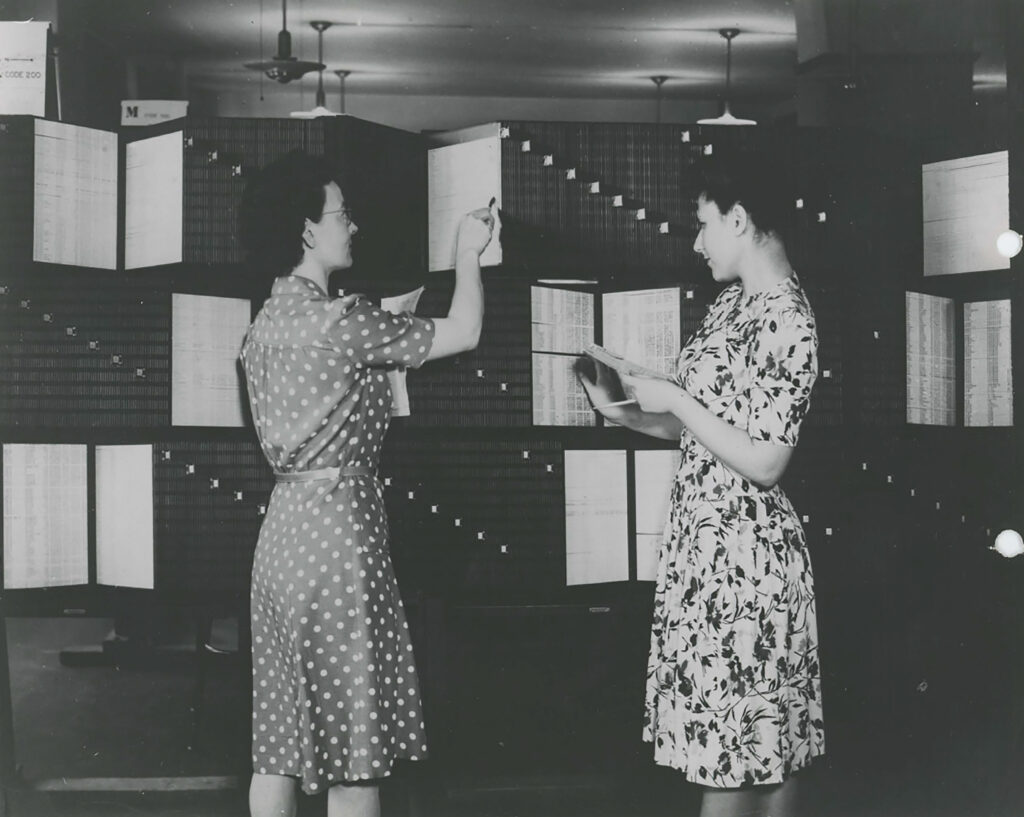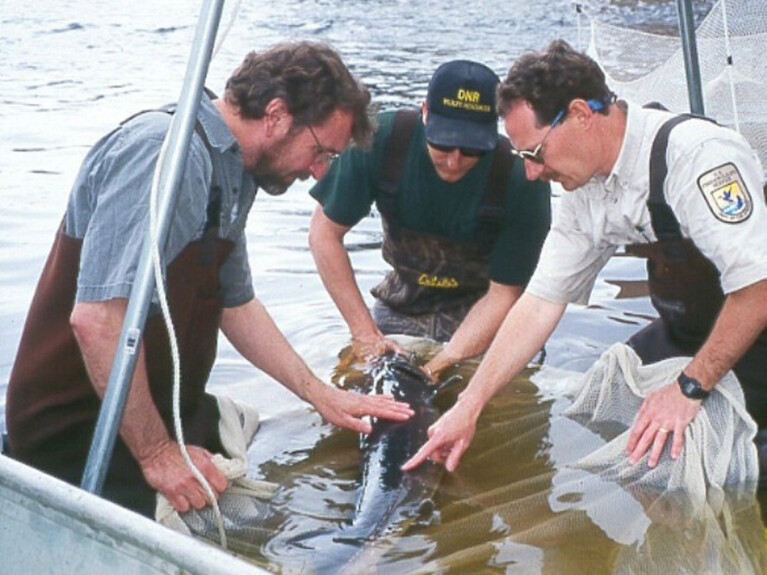The Way We Worked: Tracking ‘Aliens’ in America

Immigration and Naturalization Service (INS) employees work with a Flexoline Index, made of thin celluloid strips containing coded information.
In this World War II-era photograph, two Immigration and Naturalization Service (INS) employees work with a Flexoline Index, made of thin celluloid strips containing coded information and organized into large metal panels. INS created the index following the Alien Registration Act of 1940, also known as the Smith Act. The act required foreign nationals 14 years or older to register with the federal government, leading to a sharp increase in federal records. INS registered more than 5.6 million people during World War II. Today, U.S. Citizenship and Immigration Services (USCIS) employees use digital records to efficiently process applications, support national security, and streamline the nation’s immigration and naturalization system.
Did You Know?
Federal oversight of immigration began in 1891, when Congress created the first Office of Immigration in the Treasury Department. Visit www.uscis.gov/about-us/our-history.
About the Society for History in the Federal Government
Photo courtesy of the USCIS History Office and Library (Kate Hallgren, historian, and Zack Wilske, senior historian), in collaboration with the Society for History in the Federal Government (SHFG), bringing together government professionals, academics, consultants, students and citizens interested in understanding federal history work and the historical development of the federal government. To join, visit www.shfg.org.
The Way We Worked celebrates the past 100 years of public service through archival images.


